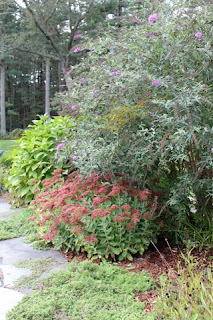The sudden onset of unseasonably GORGEOUS weather has many gardeners running for their tools. Since the soil is dryer than usual we are not faced with the typical early spring concern of compacting damp soil by walking on and working in our beds. However, the flip side of this is that some moisture lovers (may not perform as well this spring. Since, we don’t have 6’ of melting snow to irrigate our plants as they start growing this spring, keep an eye out for signs of drought stress. Many plants in full sun or high wind areas may need supplemental watering much earlier this season than your normal practices.
 |
| Crocus - Mix of cultivars |
So keep a look out in your own garden and here are some other things to look for and a few tips to get spring jumping in your garden:
Start by cleaning up the branches and winter debris, and finish raking up those Oak leaves, which were still falling in January. And check your trees for damaged or broken branches still hanging in the canopy.
Fertilize your emerging bulbs. If you did not get to it last fall, work a few spoonfuls of bulb fertilizer into the top 2” of soil around the emerging bulbs. Be careful not to damage the new growth. The early bulbs are in bloom such as Crocus, Snowdrops (Galanthus nivalis) and Winter Aconite (Eranthis hyemalis).
Ticks are active and prevalent, so be sure to check your pets and yourself after working in the garden. They especially like to hide in areas with leaf mold.
 |
| Eranthis hyemalis |
As temping as it may be to direct sow your veggies, I would continue with normal practices and start your vegetable garden by sowing your veggie seeds indoors. Broccoli, cauliflower, and lettuce are reliable; if you are feeling lucky try starting your peppers, eggplant and tomatoes, several weeks earlier than usual. If you have limited garden space, many varieties of these veggies can be grown in large pots on a sunny Patio or Deck.
Begin removing old mulch from your perennial beds, and gently cut back any remaining perennial husks, you may be surprised at how many new sprouts are starting already.
Apply pre-emergent crabgrass killers to your existing lawn now. This stops the annual weed seeds from germinating (starting to grow). The grass we want in our lawns is a perennial (comes back every year) and the pre-emergent won’t affect the existing lawn grass. If you have large areas of damage, which you hope to reseed, keep in mind that new lawn grass won’t germinate for another month but crabgrass starts germinating about the same time the Forsythia blooms.
There is some indication that the winter moth eggs may hatch early this year, previous years they have hatched in mid-April. But not everyone agrees. I recommend that if you have trees, which were hard hit last year by this noxious pest with no native predators, I would spray now. For more information on this topic I recommend checking out the UMass Landscape Industry and Urban Forestry website for good break out of differing opinions.
Check your Hemlocks (Tsuga canadensis and Tsuga caroliniana) for the wooly adelgid. This insect has spread quite a bit recently. Look along the underside of branches for fluffy white matter. These are the eggs. If you find some on your trees you can treat with Horticultural oils (which are safe for humans and wildlife) on dry days when the weather is over 45’, or consult a certified arborist.
Thank you to everyone who has sent in ‘Questions for Cory’, keep those great questions coming. I will try my best to answer those questions here.
Q. There is a pretty yellow bush blooming in my neighbor’s yard, and it is NOT Forsythia? What blooms this early in the spring?
 |
| Cornus mas |
A. Great question! There are several shrubs blooming right now, but you are most likely seeing either a Cornelian Cherry (Cornus mas), which is considered a small tree and is not actually a Cherry but a Dogwood, another example of confusing common names. The blooms of Cornus mas look more like the blooms of Maple Trees than of typical Dogwood Trees and there are several blooming around Dedham. Quite lovely to see.
 |
| Hamamalis "Arnold Promise" |
Or you could be seeing a Witchhazel (Hamamelis x intermedia), a large shrub with a gangly appearance unless it is pruned to a standard or other controlled shape. The blooms of Witchhazel remind me more of a sea anemone than a typical flower, but are quite lovely in their uniqueness. “Pallida” and “Arnold Promise” are both wonderful yellow cultivars of this shrub. Both plants are very hardy and would be lovely additions to your early spring garden.
















